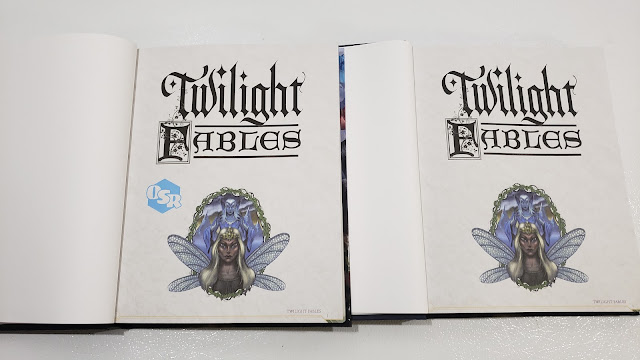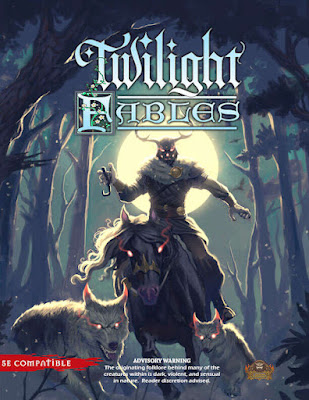
It is four decades since the armies of the Zahjik Khaliphate stood before the walls of Drakenheim. It was a turning point for the Cimbrian Empire. The Burgher Wars which broke the power of the emperor and nobility, and saw the rise of the both the merchant classes and the city-states were forgotten in the face of the invasion from the east across the steppes. Emperor Maximillian III rallied the empire and together with the High Prelate of the Sigurdian Church, in command of a retinue of Siguardian templar-monks, broke the siege and drove out the invading forces. In the decades since, the city-states have retained their sense of independence, but maintained stronger ties of fealty to the emperor; the Sigurdian Church has cemented its place as the dominant faith in the empire; the nobility, their power greatly weakened by the Burgher Wars, have strengthened their ties with the merchants; and the peasantry has continued to toil, whether on the land itself or in the towns, either for the merchants or the nobility. The Cimbrian Empire has also undergone a new renaissance in terms of the arts and sciences. Despite having driven out the armies of the Zahjik Khaliphate and remained at peace for some four decades, the Cimbrian Empire is not entirely safe. Crime is rife, especially in the city-states. Dark cults hide across all strata of society, their members worshipping all manner of demons and malevolent beings, whilst sorcerers practice dark magic in secret—and both sorcerers and cultists are the targets of the empire’s witchfinders. The restless dead haunt the ancient ruins to found in the mountains and deep forests which separate the city states, and that is when the forests are not infested by ape-like beastmen or by bestial mutants transformed by corrupting magic, both intent on murder—or worse. There are rumours too of monsters out of legend still being found in dark places, and of the Zahjik Khaliphate once again preparing to invade, and of the Elves, the masters of the land before the rise of men and the founding of the Cimbrian Empire, manipulating those in power and working to restore their control once again.
This is the setting for
Streets of Peril: Fantasy Roleplay, published by
Broken Blade Publishing. It is a grimdark roleplaying game set in an empire of Germanic city states, which humanocentric, combines elements of science and magic, and sees a few desperate men and women prepared to step up and if not be heroes, then at least do their best to protect the empire, for even if they succeed, their efforts will rarely be recognised.
Streets of Peril: Fantasy Roleplay includes complete rules, numerous character options, mixes firearms and magic and fencing, a bestiary, campaign options, and a starting scenario.
A Player Character in
Streets of Peril: Fantasy Roleplay is defined by six attributes—Might, Toughness, Agility, Willpower, Intelligence, and Fate—rated between one and four, a Lineage, and a Class. A Player Character will also have three ambitions, one of which he will have in common with the other Player Characters. These will reward the Player Character with Experience Points as he works towards fulfilling them and encourages the player to roleplay and look for opportunities to work toward their completion. The Lineages each provide two special traits and can be divided between the Cimbrian and the non-Cimbrian. The Burgher, Commoner, Highborn are Cimbrian, whilst the non-Cimbrian are Brythonian (from the Brythonian Isles to the north), Changeling, Smolyani (travellers noted for their luck), Valentino (from Valenti, the dominant city-state of the former Tiberean Empire to the south), and Zahjik (from the Zahjik Khaliphate). There are eight Classes in
Streets of Peril: Fantasy Roleplay, each of which provides several Class traits, skill and equipment proficiencies, and starting equipment. Each also has several Subclasses, for example, the Brute has Berserker, Brawler, Folk Hero, and Thug, each of which has its own Special Trait. The Classes are Brute, Cultist, Duellist, Engineer, Magister, Man-at-Arms, Scoundrel, and Wayfarer. Of these, the Cultist includes Priests and Templars rather than members of a demonic or other cult; Duellists study at Schools of Fencing and the Engineer actually does not have Subclasses; and the Magister includes the Alchemist, Necromancer, Seer, and Wizard.
To create a Player Character, a player assigns one attribute at Rank 4, two each at Rank 3 and Rank 2, and one at Rank 1. He selects a Lineage, chooses a name, decides on three Ambitions, selects a Class, and then one Class Trait. If selecting a Class like the Engineer or the Magister, the player also selects Inventions or spells as appropriate. The process is quick and simple.
Name: Otto Vogel
Lineage: Commoner (Cimerian)
Class: Brute Subclass: Thug
Ambitions: Humiliate Hans Hiegel, Keep the neighbourhood safe, Do right by his old mum
Might 4 Toughness 3 Agility 2
Willpower 3 Intelligence 1 Fate 2
Traits: Labourer, Rugged, Crushing Blows, Ignore Pain, Mighty Blows, Rogue
Skill Proficiencies: Athletics 1, Fighting 2, Grit 3, Intimidate 2
Equipment Proficiencies: Light, Medium, & Heavy Armour, Common & Heavy Melee Weapons, Throwing Ranged Weapons
Equipment: Club, gambeson, bottle of spirits, dice, seven pennies
Mechanically,
Streets of Peril: Fantasy Roleplay employs a dice pool system using just six-sided dice, although dice of three different colours. This is white, red, and black, but other colours can be substituted. Rolls of four or more are counted as successes, but that is only on the white dice. On the red dice, rolls of three or more are counted as successes, and rolls of two or more are counted as successes on the black dice. All of the dice explode on rolls of six or more. Modifiers—bonuses and penalties—adjust the number of dice in the pool, with a Player Character’s Fate attribute providing a number of luck points a player can spend each session to provide a bonus of two dice. The dice are rolled against Difficulty Values which range from one for routine to four for impossible. Various items and traits upgrade the white dice to red or black dice, whilst others downgrade the red and the black back down to white. The outcome of opposed rolls is determined by the number of successes rolled. In general, dice pools are formed from the appropriate attribute value for an attribute check or the combination of the attribute and skill for a skill check.
Combat consists of opposed rolls, typically the attacker’s Fighting skill or Ranged skill against the defender’s Defence skill. The number of the successes rolled determines the number of bonus damage dice rolled in addition to that of the weapon. Successes rolled on the damage dice rolled inflict Grit damage. The combat rules cover most situations, including shooting in melee, dual wielding, grappling, and more. The weapons include bombs like grenades and choking gas bombs, and firearms such as the blunderbuss, harquebus, musket, and pistol. Weapons can have special traits, as can armour.
Although there are rules for a Critical Failure, there are no rules for a Critical Success. In general, if a player rolls enough Successes, his character succeeds at the action, but that is that. Combat is the exception, since Successes increase the number of Damage Dice rolled, but in other situations the excess Success have no effect. However, one feature missing from
Streets of Peril: Fantasy Roleplay found in similar roleplaying games is that of a critical hits table.
Magic is divided into white magic and black magic. White magic is acceptable to most of society in the Cimerian Empire, with divine magic being the rarest forms of white magic, whilst back magic is the province of necromancers, cultists, demon worshippers, and the like. With arcane magic, there is the chance of backlash and aetheric manifestations. This occurs when ones are rolled on a skill roll for a Magic check, and might be tremors shaking the earth, the temperature suddenly changing, a swarm of locusts blacking out the sky, and so on. Casters of arcane magic directly manipulate aetheric energy and need their hands free, so cannot wear armour and must have their hands free. Miracles, or divine magic, also uses the Magic check to see if the caster is successful. However, casters of miracles can wear armour and do not suffer from aetheric manifestations, but they call upon the deity they worship, and potentially invoke said deity’s wrath or mercy. What this means is that the Difficulty Value of the Magic check increases for each spell cast over the course of each day. If a subsequent Magic check is failed, then the caster loses the ability to cast miracles for the day. This makes arcane magic much freer and miracles much more of a resource to hold in reserve.
Streets of Peril: Fantasy Roleplay includes a list of miracles and spells, as a well as a list of apothecary’s ingredients and potions, the latter useful for the Alchemist Subclass. For the Engineer Class there is a list of Inventions, such as Bounding Boots, Electric Cloak, Targeting System, or Wrist Rocket. Magical items are intended to be rare and difficult to find, but numerous examples are included. For example, Ghost mail has been enchanted to be silent; Zahjik Janissaries carry a single, one-use
Black Arrow which is enchanted to slay enemy champions and powerful monsters, and can do great damage and pierce armour;
Witch Bottles protect the owner from curses;
Hag’s Fingers enable the spell
Wither to be cast once per encounter; and more. The bestiary includes beasts like the Bogtopus and werewolf, the Deep One-like Drowners, Fey such as the Banshee and the Spriggan, Formorians, and more.
A broad overview of the Cimerian Empire is given, including its geography, law and order, crime, attitudes to duelling, religions, and more, there is a good discussion about campaign types. These include having the Player Characters as house retainers, ship’s crews, members of the town watch, witch finder’s assistants, and more. This is combined with themes, whether that is horror, politics, mystery, trade, or others. The advice for the Game Master is short, but to the point—keep it grim and keep it gritty, and whilst there are plenty of monsters in the bestiary, to keep their appearances rare to ensure that the horror when they do appear is maintained. Rounding out
Streets of Peril: Fantasy Roleplay is a ready-to-play scenario, ‘Finkelstein’s Laboratory’. It is a short affair which plays upon Frankenstein; or, The Modern Prometheus and has the Player Characters hired by a noble to collect some property and possessions from the laboratory of a medical doctor whose work he was researching. It is a short affair, one that the players could very well complete in the same session as they create their characters and should provide them with a feel for the setting and the roleplaying game’s mechanics.
Physically,
Streets of Peril: Fantasy Roleplay is presented in black and white with red used here and there. It does need a slight edit in places, but the artwork is decent and the book well written.
Ultimately, it is difficult to avoid comparisons between
Streets of Peril: Fantasy Roleplay and Warhammer Fantasy Roleplay. Both are set in an empire of Germanic city-states, both have a dominant faith whilst allowing the worship of the Old Gods, both have a grimdark tone, and so on.
However,
Streets of Peril: Fantasy Roleplay is a humanocentric roleplaying game and the other race, the Elves, are mistrusted and feared. The setting is not beset by the forces of Chaos. The Classes for the Player Characters are kept simple and streamlined and there is no great progression along varying career paths, which means that progression wise, the roleplaying game is quite limited in scope; and the mechanics are designed to be easier, faster, and more abstract than simulationist.
Streets of Peril: Fantasy Roleplay offers grimdark fantasy roleplaying, even grim and perilous roleplaying, but with lighter, faster mechanics. It is a solid entry in the grimdark fantasy subgenre and if a gaming group is looking for a lighter alternative to those available in the hobby, then it might be just what they need.
 Starting off the Halloween October Horror Movie Challenge with a brand new one. I watched this for the Monster Movie Fun Time Go podcast. You can hear it all here.
Starting off the Halloween October Horror Movie Challenge with a brand new one. I watched this for the Monster Movie Fun Time Go podcast. You can hear it all here. 


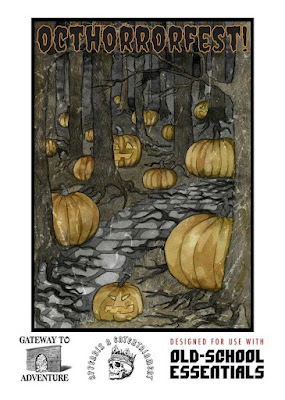









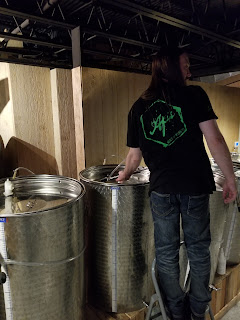
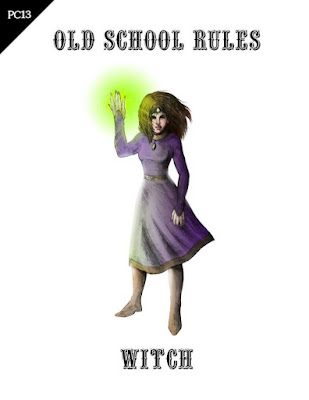

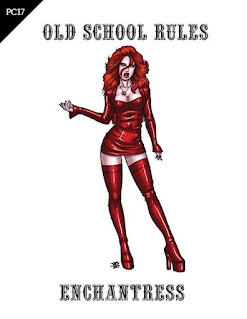
.jpg)









